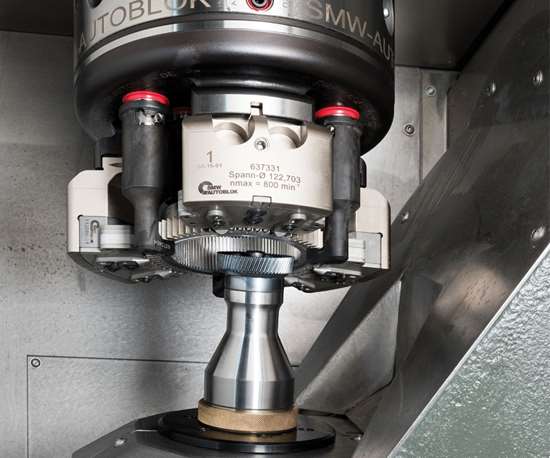Hard Scudding Improves Gear Production and Performance
This process is widely used in producing internal, external, helical and spur gears, as well as splines and other powertrain components.
Scudding has long been used to machine green (soft) gears and with excellent results both in terms of cycle times reduced even below that of gear shaping and the quality of the surface finish achieved. Recent advances have led to the development of hard scudding, which enables the re-machining of hardened gears with a tooth-to-tooth and total composite error in the AGMA 12, DIN 5 range and a surface finish better than 1.5 Ra.
In recent years, scudding has advanced beyond the capabilities of traditional skiving; a wet machining process as opposed to scudding, which is dry. This is especially true for the internal gears used primarily in the powertrain buildup. Scudding, which is 5 to 10 times faster than gear shaping, forms the surface of the workpiece through several small enveloping cuts, providing a surface finish and part quality level that was far superior to hobbing, shaping or broaching. In addition, scudding is a continuous generating process, no idle strokes on the machine tool, as when shaping gears. Ring gears, sliding sleeves and annulus gearing (whether internal helical or spur), external helical or spur or blind spline, synchronizer parts with block tooth features and synchronizer hubs remain among the popular products made with scudding technology.
Featured Content
Today, this process is widely used in production environments for internal, external, helical and spur gears, as well as splines and other components in the powertrain world. The machining can be done without the need for an undercut or groove (clearance), and the lead of the gear can be manipulated via axial motions (crown/taper). According to German Machine Tools of America (GMTA), it is a demonstrably superior technology that automotive suppliers have embraced for many years.
As for the capital investment required, it is minimal for shops and production departments already doing scudding since the same gear can be run on the same CNC machine using a solid carbide tool to do the work. Recent testing done on various internal automotive powertrain and agricultural machinery ring gears is showing positive results. Stock division calculations on the tooth position are standard technology for GMTA and Profilator (a manufacturer of gear cutting machines), so recutting is quick and easy. Using the latest CNC technology to control the machine kinematics, users are able to transfer this technology to scudding machinery that is already deployed in the field. Thus, the same part can be cut on different machines at different times, allowing for more flexibility in scheduling. With today’s portable programming, on-screen or offline tool path and cutting condition simulation—plus the immediacy of call-up on-screen for all values and tolerances in real time—the busy machine shop or large production department stays flexible using this hard scudding technology. In some cases, this technology is applicable on near net, pre-hardened gear blanks, allowing significant step reductions in the manufacturing process.
In operation, when cutting 0.006" to 0.0010" per flank on a tooth, the hard scudding process can be used on carburized or through-hardened parts; nitriding generally does not provide enough case depth to ensure sufficient stock for clean-up. An automotive ring gear, for example, which requires 40 to 50 seconds for scudding, can be hard scudded in 25-30 seconds. This process development stands as a viable and cost-effective alternative to conventional grind-and-hone operations, yielding an attractive cost per piece and extended tool life. The added benefits of reduced capital outlay, and a significantly more consistent end product bode well for the automotive powertrain and other gear market segments.
Scott Knoy is vice president of sales and marketing for German Machine Tools of America (GMTA).







